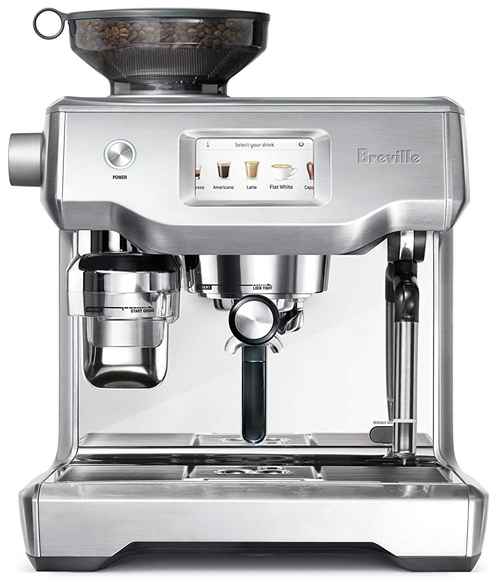Basic Latte Recipe [+Tips]
Note: This page contains affiliate links.
As an Amazon Associate, I earn from qualifying purchases when you click on the link, but you are not charged extra.
Let’s be real-there’s just something magical about a perfectly crafted latte. It’s warm, comforting, just the right kind of indulgent, and oh-so-satisfying. You can have it in the morning to wake up your soul, in the afternoon as a cozy pick-me-up, or in the evening with a splash of your favorite syrup and a sprinkle of cinnamon.
- Old World Christmas Beans: Tastes like the holidays in every cup — discover the cozy magic of Old World Christmas Beans before the season slips away.
- Kirkland Sumatra French Roast : Dark, bold, and wildly smooth—why Kirkland’s Sumatra French Roast is the best-kept secret of serious coffee drinkers.
- Hot Fudge Whole Bean Coffee : What happens when dessert meets coffee? Meet the decadent whole bean that tastes like hot fudge—but better.
- Aroma Ridge Guatemala Antigua Medium Roast : From the highlands of Guatemala to your morning mug—this rich, balanced roast is waking up coffee lovers everywhere.
- Juan Valdez Cumbre Colombian Coffee : Crafted by Colombia’s most iconic coffee legend—why Cumbre is a must-try for fans of bold, authentic flavor.
Lattes have become a global coffee shop staple, and for good reason:
- They’re deliciously smooth and balanced.
- They showcase the flavors of espresso without being overpowering.
- You can customize them to suit any mood or season.
But guess what? You don’t need to drop $6 at a café every time. Making a latte at home is not only doable, it’s also fun, budget-friendly, and wildly satisfying.
- 1 Ingredients For A Basic Latte Recipe
- 2 How To Make A Basic Latte (Step-by-Step)
- 3 Expert Tips: Latte Mastery 101
- 4 Recipe Variations: Level Up Your Latte
- 5 Final Words: Savor The Ritual
- 6 FAQs
- 6.1 What Is A Basic Latte?
- 6.2 What Ingredients Do I Need For A Basic Latte?
- 6.3 How Do You Make Espresso For A Latte?
- 6.4 Can I Use Regular Coffee Instead Of Espresso For A Latte?
- 6.5 How Do I Steam Milk For A Latte?
- 6.6 What’s The Difference Between A Latte And A Cappuccino?
- 6.7 Can I Make A Latte Without An Espresso Machine?
- 6.8 What Is The Ideal Milk-to-espresso Ratio For A Latte?
- 6.9 Can I Flavor My Latte?
- 6.10 How Do I Make A Dairy-free Latte?
Ingredients For A Basic Latte Recipe
Before you get into latte wizardry, you’ll want to gather a few simple ingredients. No frills. No fancy syrups (unless you’re feeling adventurous). Just the foundation of what makes a latte truly sing.
✨ You’ll Need
-
Espresso
The heart and soul of your latte. Ideally, you’ll want:
- 1-2 shots of freshly brewed espresso (1 shot = about 1 oz)
-
No espresso machine? No problem! You can use:
- A strong-brewed coffee via Aeropress
- A moka pot (hello stovetop espresso!)
- Instant espresso powder in a pinch
-
Milk
The creamy canvas of your latte. Choose based on your taste and dietary needs:
- Whole milk (best froth & flavor)
- 2% milk (lighter but still creamy)
-
Non-dairy options like:
- Oat milk (rich and naturally sweet)
- Almond milk (nutty and light)
- Soy milk (creamy with good froth)
- Coconut milk (adds tropical notes)
-
Optional Add-ins
- Sugar or sweetener
- Vanilla extract
- Caramel or chocolate syrup
- Cinnamon or nutmeg for sprinkling
How To Make A Basic Latte (Step-by-Step)
Alright, latte lovers-aprons on, mugs ready. Here’s how to make a classic latte right at home, in just a few steps. You’ll feel like a barista in no time.
✅ Step 1: Brew The Espresso
- Start by brewing your espresso using your method of choice.
- For a standard latte, you want about 1 to 2 oz of espresso.
- Pour it into a large mug or glass.
☕ Pro tip: Warm your mug first with hot water so your latte stays hotter longer!
✅ Step 2: Steam And Froth Your Milk
- Heat 6-8 oz of milk to about 150°F (65°C). That’s hot but not boiling.
-
Use a:
- Steam wand if you have an espresso machine
- Handheld milk frother (battery-powered ones work great)
- French press (yes, it works surprisingly well!)
- Whisk or shake the milk in a jar (a bit more effort but still effective)
You’re looking for that velvety microfoam-not huge bubbles, but a smooth, creamy texture.
✅ Step 3: Pour And Layer
- Slowly pour the steamed milk into your espresso.
- Hold back the foam with a spoon at first, then top it off with a dollop of foam.
- Want latte art? Tilt the mug and channel your inner artist-but no pressure!
Expert Tips: Latte Mastery 101
Let’s take your latte game from ’good’ to ’OMG, did you really make this at home?’
Frothing Tips
- Whole milk froths best due to its fat content.
- Oat milk is the best non-dairy option for frothing-it behaves most like dairy.
- Don’t overheat your milk-too hot and it’ll scorch or lose sweetness.
Brewing Better Espresso
- Use freshly ground beans for richer flavor.
- Keep your grind fine-like table salt.
- If you’re using a moka pot, fill the bottom chamber with hot water to speed up brewing and reduce bitterness.
Latte Temperature
- Ideal serving temp? Between 130°F and 160°F.
- Too hot and you’ll burn your tongue (and dull the milk’s sweetness).
Cleaning Counts
- Clean your frother or steam wand immediately after use-dried milk is no fun to scrub off later.
Recipe Variations: Level Up Your Latte
Okay, now that you’ve nailed the classic latte-let’s play! There are endless ways to jazz up your latte depending on your mood, the season, or your cravings.
Fall Faves
- Pumpkin Spice Latte: Add 1 tbsp pumpkin purée, ¼ tsp pumpkin spice, and a dash of vanilla + maple syrup.
- Cinnamon Maple Latte: Add 1 tsp maple syrup and a pinch of cinnamon before pouring in your milk.
Sweet Indulgences
- Mocha Latte: Add 1 tbsp cocoa powder + sugar (or chocolate syrup) to the espresso before milk.
- Caramel Latte: Add 1 tbsp caramel sauce and a drizzle on top of the foam.
Herbal & Unique
- Matcha Latte: Skip the espresso-whisk 1-2 tsp matcha powder with hot water and pour over steamed milk.
- Chai Latte: Brew strong chai tea and use it instead of espresso.
Summer Iced Lattes
- Brew espresso, let it cool, and pour over ice. Add cold milk and syrup if desired. Done!
Final Words: Savor The Ritual
Let’s not forget that making a latte isn’t just about the drink-it’s about the experience. The soft hiss of the frother. The rich aroma of espresso. That first velvety sip. It’s a mini ritual of joy in your day.
Whether you’re prepping for a morning meeting or cozying up on a rainy afternoon, there’s something deeply comforting about crafting a latte with your own two hands. And trust me, your future self will thank you for learning this little luxury.
FAQs
What Is A Basic Latte?
A basic latte is a coffee drink made with a shot of espresso and steamed milk, typically topped with a small amount of milk foam. The ratio of espresso to milk is generally around 1:3, with the milk creating a creamy texture.
What Ingredients Do I Need For A Basic Latte?
For a basic latte, you will need espresso, milk (preferably whole milk for creaminess, but alternatives like oat, almond, or soy milk work as well), and optionally a sweetener like sugar or flavored syrups.
How Do You Make Espresso For A Latte?
To make espresso, you need an espresso machine, finely ground coffee, and water at a temperature of around 200°F (93°C). Brew a shot of espresso by forcing hot water through the coffee grounds at high pressure. A standard shot is typically 1 ounce (30 mL).
Can I Use Regular Coffee Instead Of Espresso For A Latte?
While it’s possible to use regular brewed coffee, it won’t have the same rich, intense flavor as espresso. The espresso’s concentrated nature is what gives a latte its characteristic taste. If using regular coffee, you may need to use a stronger brew.
How Do I Steam Milk For A Latte?
To steam milk, use a steam wand attached to an espresso machine. Submerge the steam wand just below the surface of the milk and turn it on. As the milk heats up, create a whirlpool effect to incorporate air and achieve a velvety microfoam. Ideal temperature is between 150°F to 155°F (65°C-68°C).
What’s The Difference Between A Latte And A Cappuccino?
The main difference lies in the milk foam. A cappuccino has a much thicker layer of foam, typically 1:1:1 (espresso, steamed milk, foam), while a latte has a smooth, creamy texture with a thin layer of foam. The latte is also milkier, as it has a higher ratio of milk to espresso.
Can I Make A Latte Without An Espresso Machine?
Yes! You can make a latte using a stovetop espresso maker (Moka pot) or even by brewing strong coffee with a drip coffee maker. For steaming milk, you can use a handheld milk frother or heat the milk on the stovetop, whisking vigorously to create foam.
What Is The Ideal Milk-to-espresso Ratio For A Latte?
The typical ratio for a classic latte is 1 part espresso to 3 parts steamed milk. This gives the drink a balanced flavor with a smooth texture, although you can adjust the ratio to your personal taste preference.
Can I Flavor My Latte?
Yes, you can add various flavors to your latte, such as vanilla, caramel, hazelnut, or even spices like cinnamon or nutmeg. You can use flavored syrups, or for a more natural taste, you can infuse the milk with the flavor before steaming it.
How Do I Make A Dairy-free Latte?
To make a dairy-free latte, simply replace regular milk with a non-dairy alternative like oat milk, almond milk, soy milk, or coconut milk. Oat milk is particularly popular for its creamy texture that closely mimics dairy milk in lattes.

